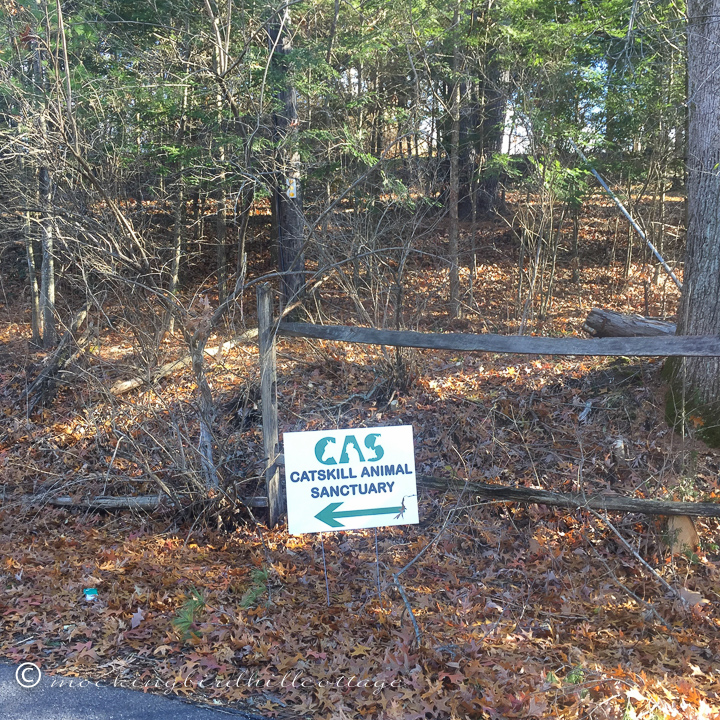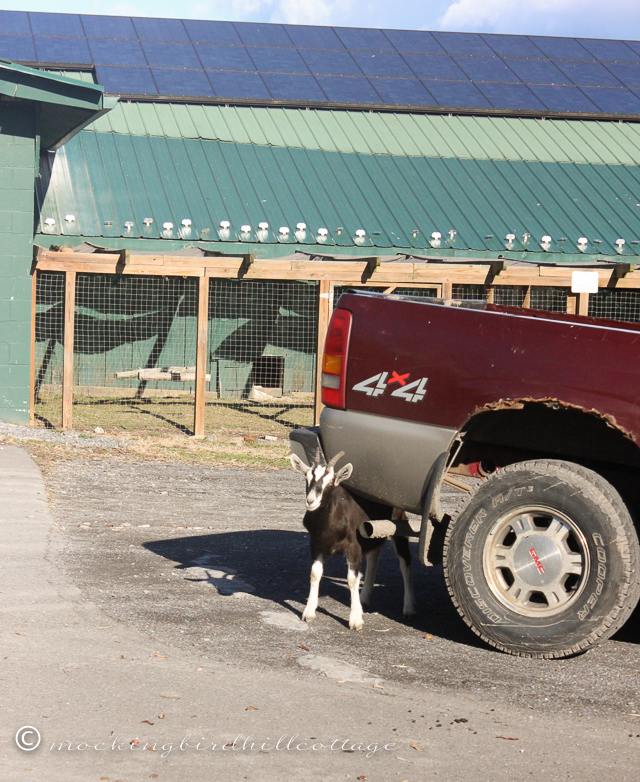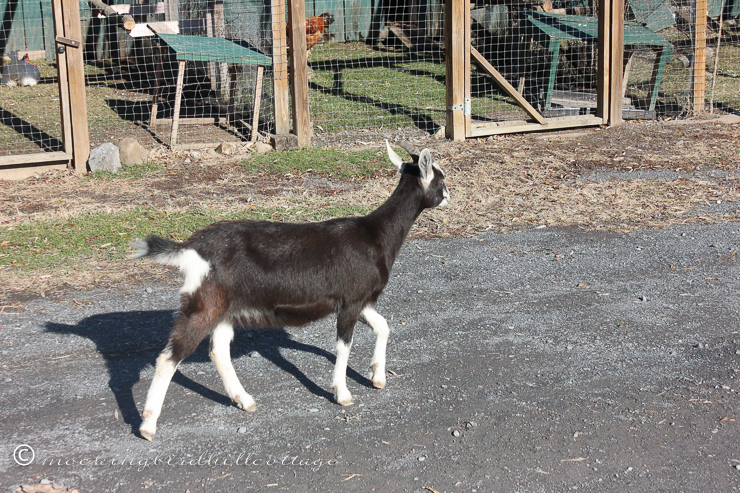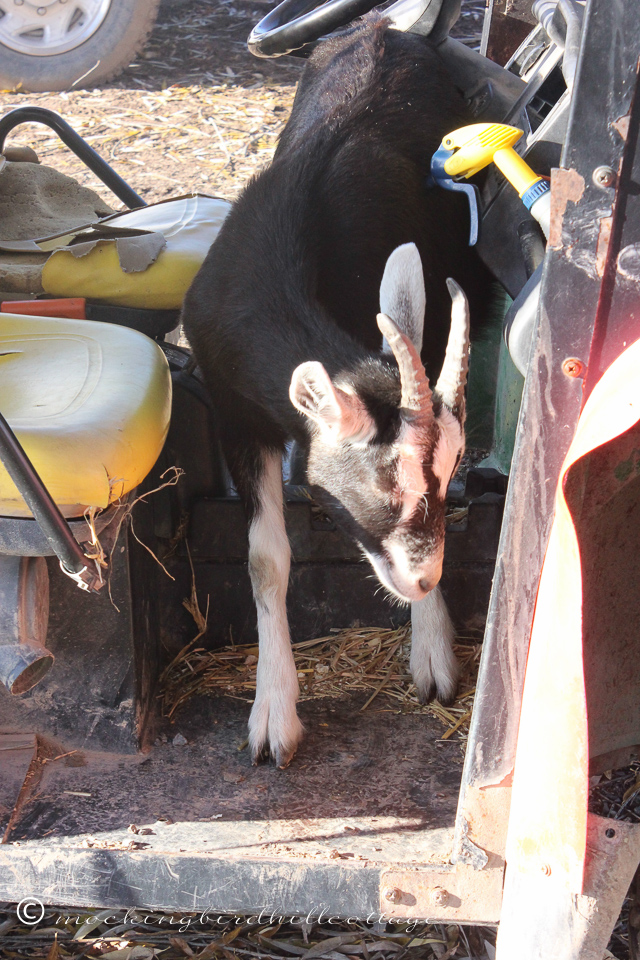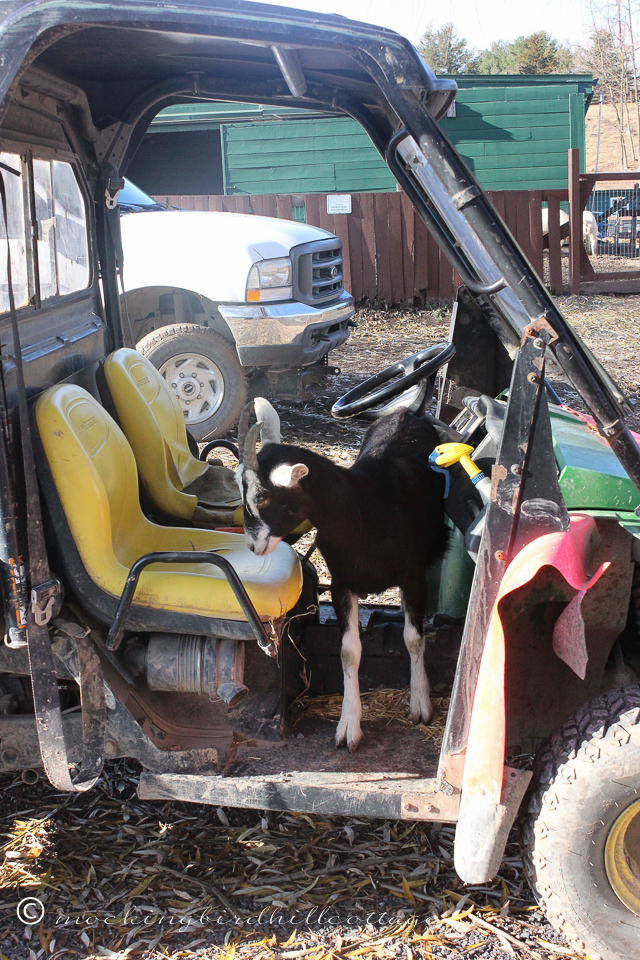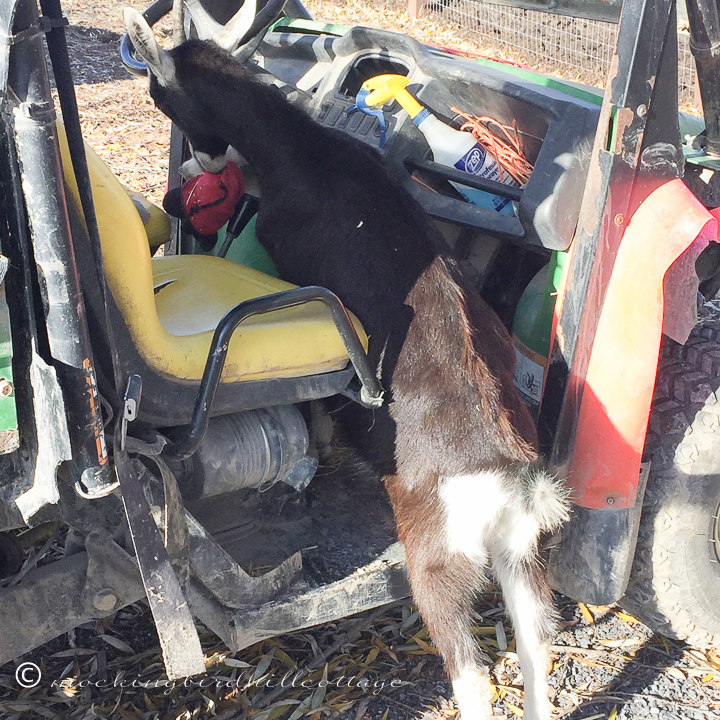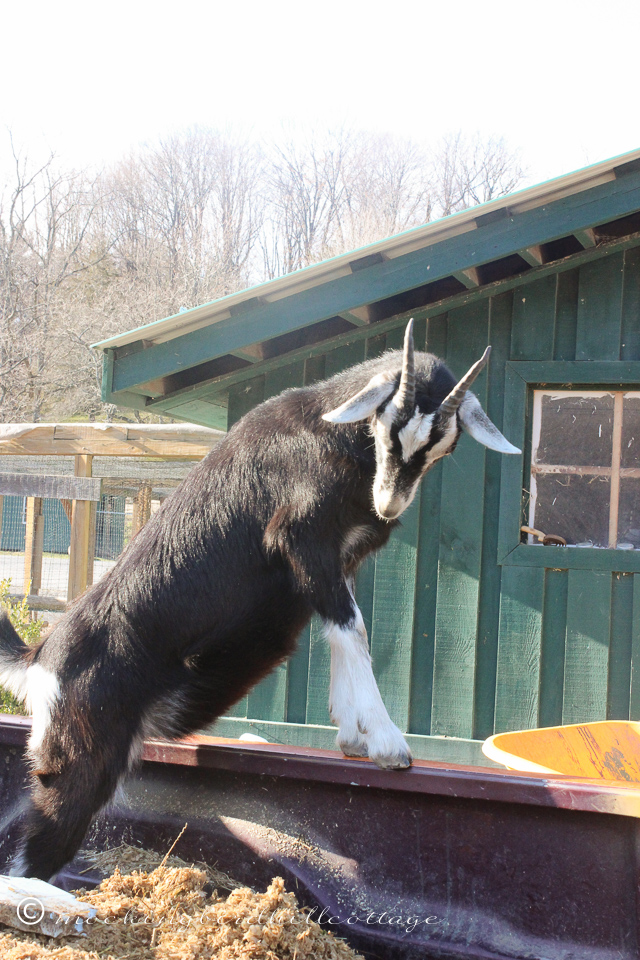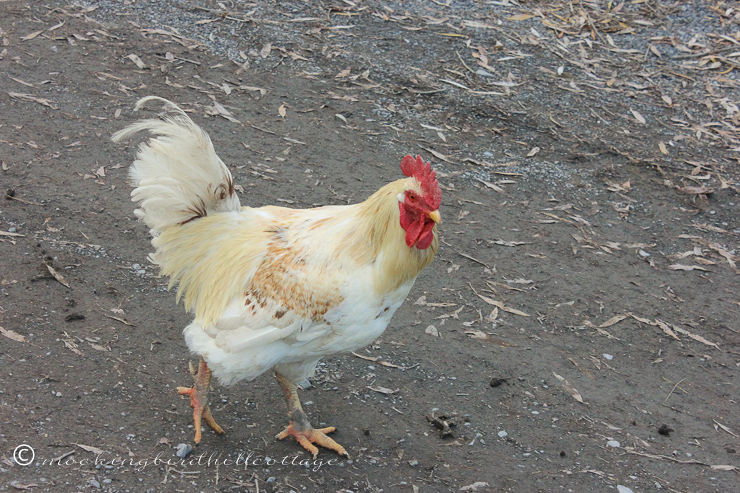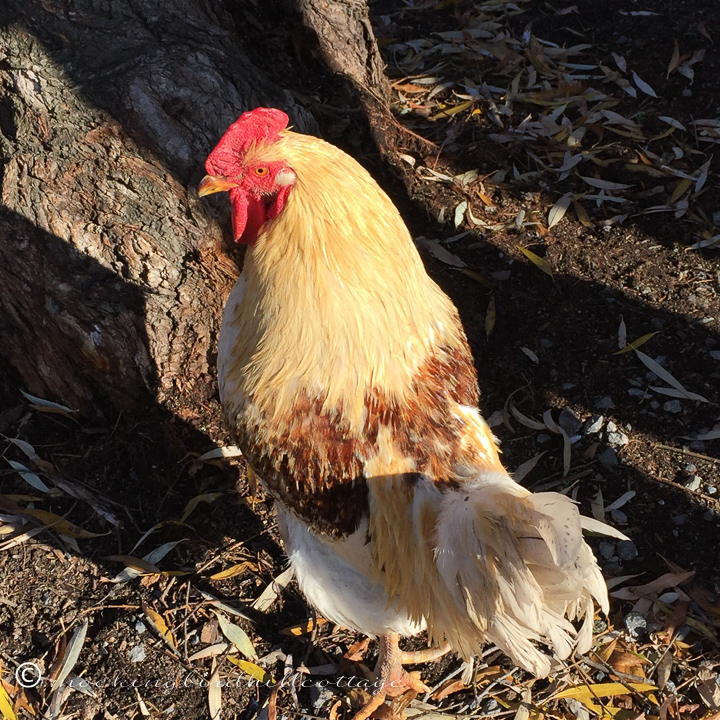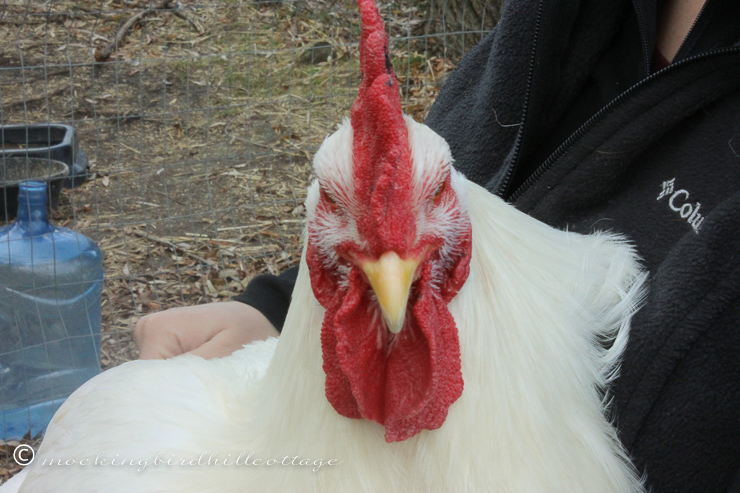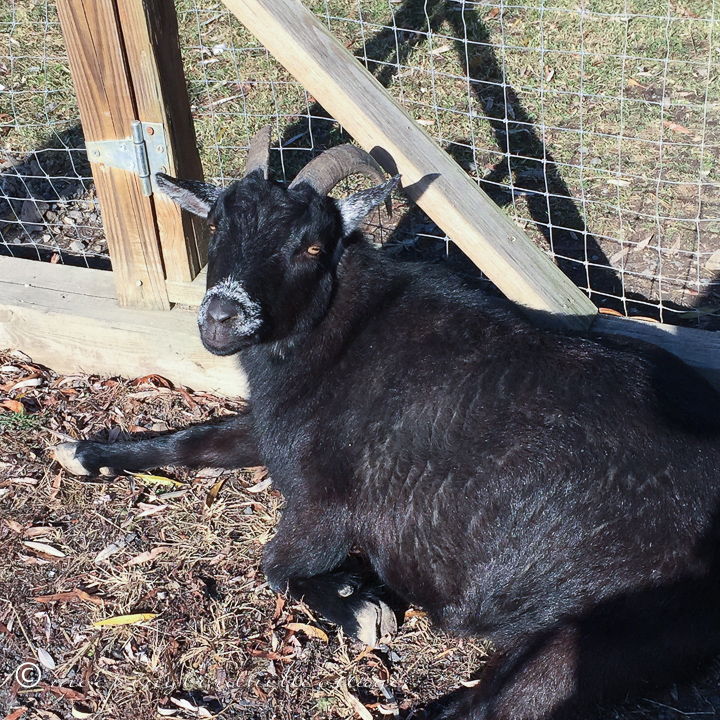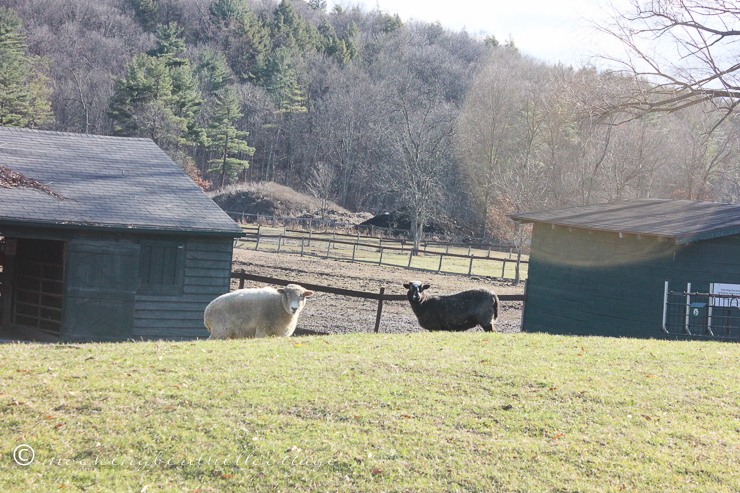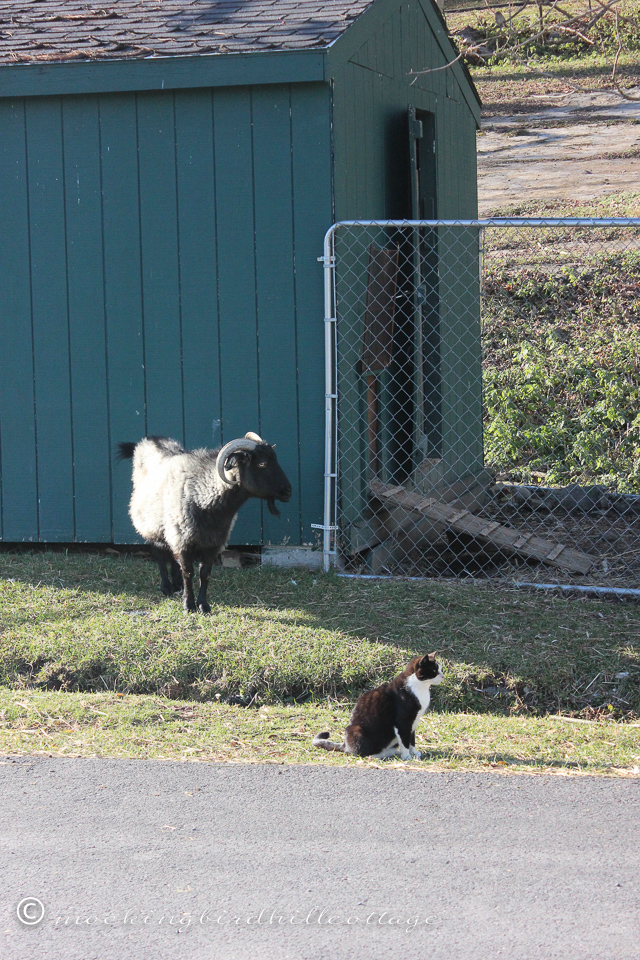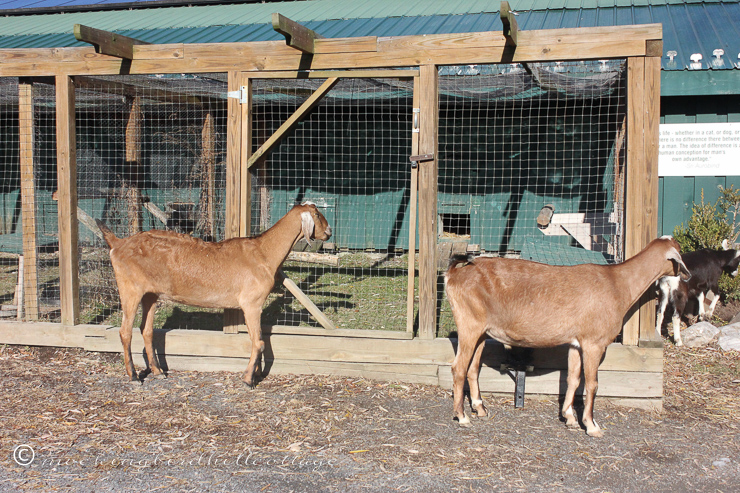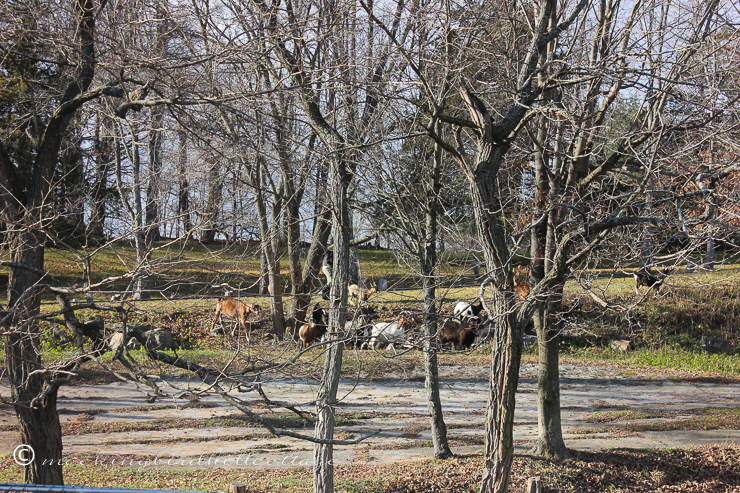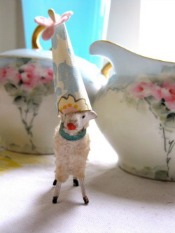More of the tour of the Catskill Animal Sanctuary, with some facts about factory farms thrown in here and there, because that information is very much a part of the tour.
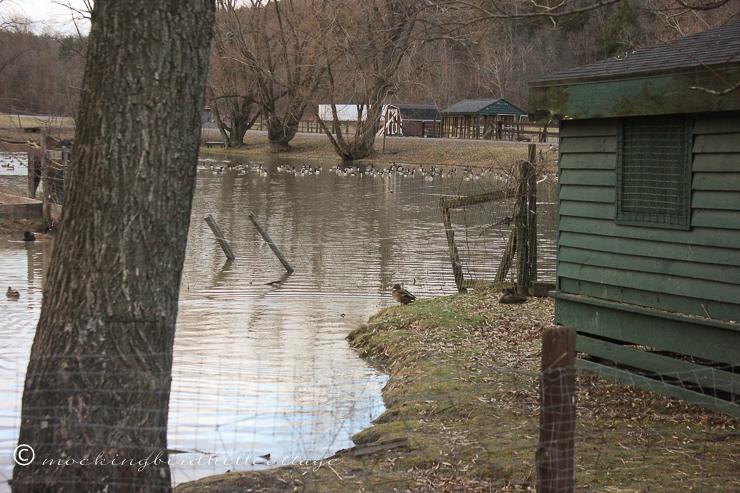
The Canada Geese know a good thing when they see it. They’re staying on the grounds for a while.

Do you see that black duck on the pond? He was rescued from someone who was going to use him as ‘bait’ in dog-fight training. On every level, that is horrific.
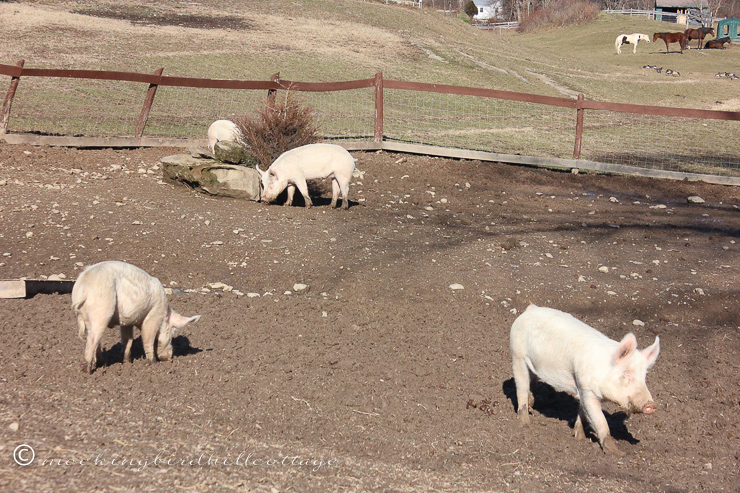
These pigs were rescued as a group. Even thought they’re grown, the staff still calls them the piglets.
I’m sure you know this, but pigs are highly intelligent. And they know when they are in danger and when they’re about to be killed. Lesley told us a story about a man who was a farmer and raised pigs. He thought he was being humane by taking the pigs in one at a time to be slaughtered, not as a group where they could see what was happening. But over time, he realized the remaining pigs were stressed and anxious. They knew what was going on. They couldn’t relax. They didn’t feel safe. He had an epiphany and became a vegetable farmer instead and an advocate for animals.
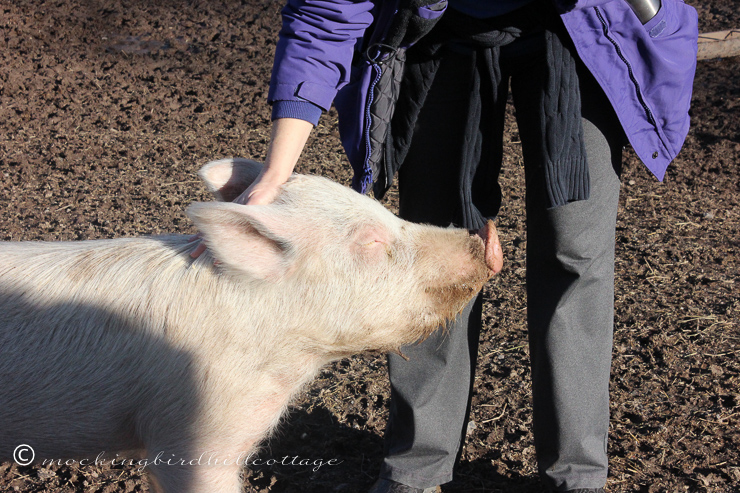
Look at this blissful face. They love and need affection.
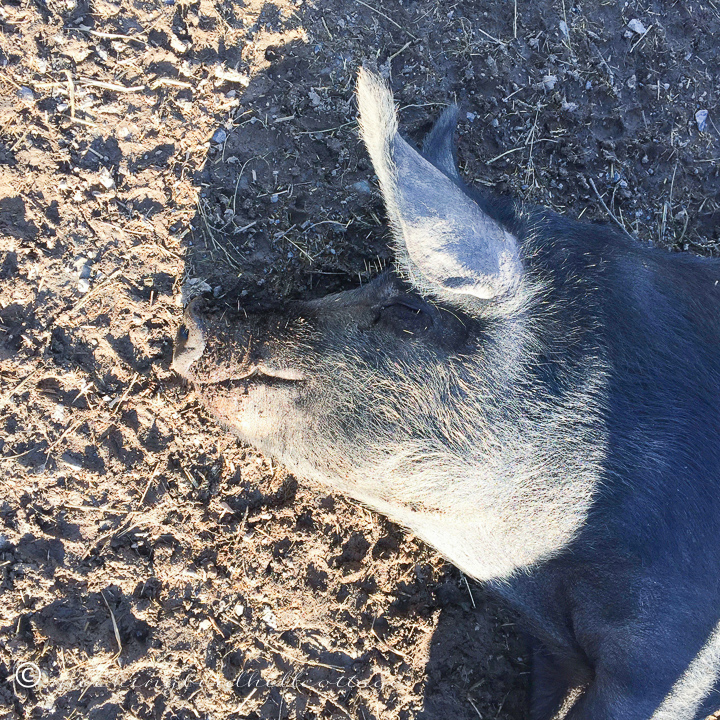
This is Jasmine. She is one of the first pigs we met. I fell in love with her. Lesley told us to go ahead and scratch and pet her because Jasmine would immediately lie down so her tummy could be scratched.
Look at that face! She was in heaven. This pig filled my heart up. I called her Blissful Jasmine.
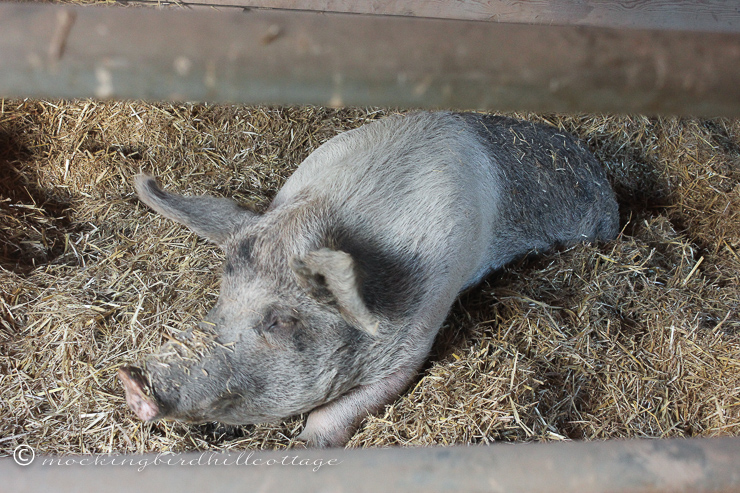
Nadine, resting in the barn. They make nests in the straw for their beds.
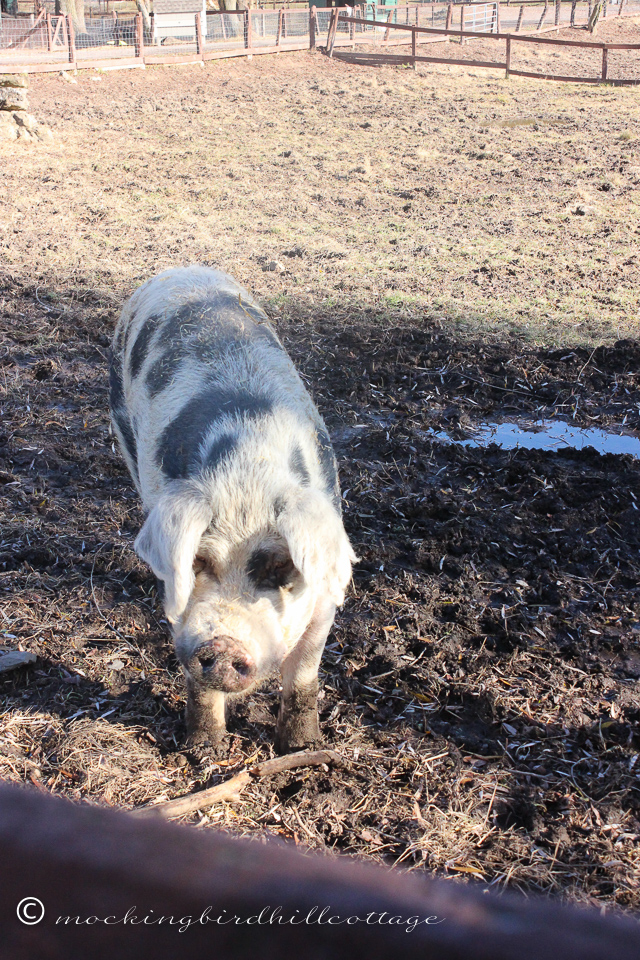
This is handsome Reggie. This particular pen had very large pigs. When we asked Lesley about them, she explained that some breeders have genetically engineered pigs that grow very large, very fast. Why? So they get more meat that much faster. Besides the obvious, what this does to the pigs is not good. They are much bigger than they should be. They develop joint problems and general health problems. It’s hard for some of them to get around. And, of course, even if rescued, those modifications shorten their life span.
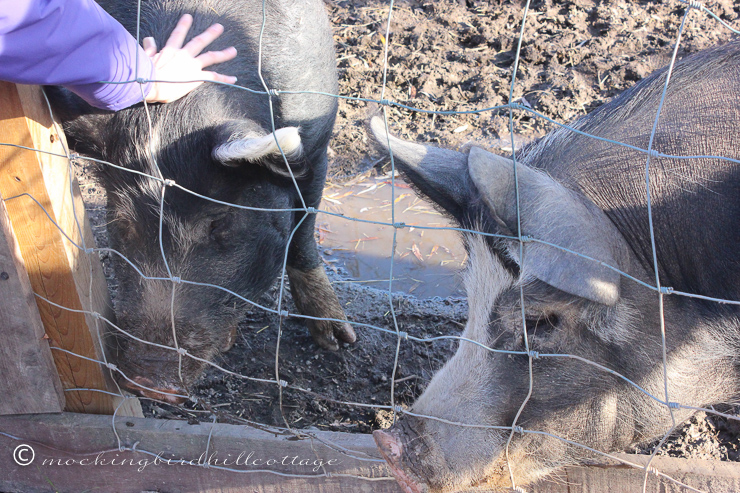
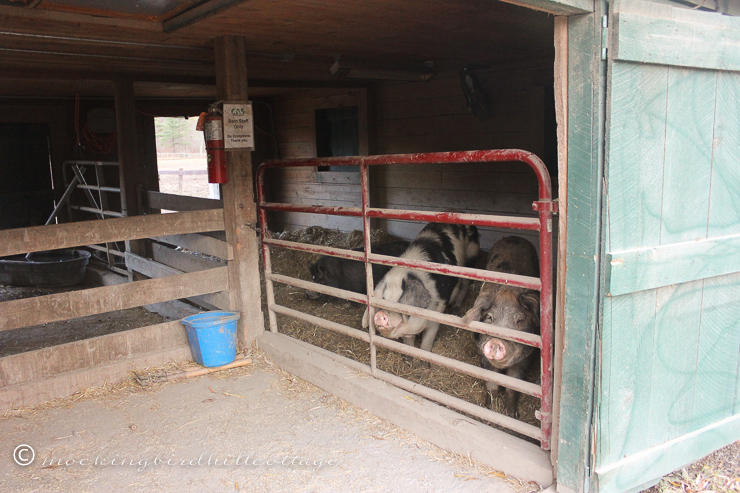
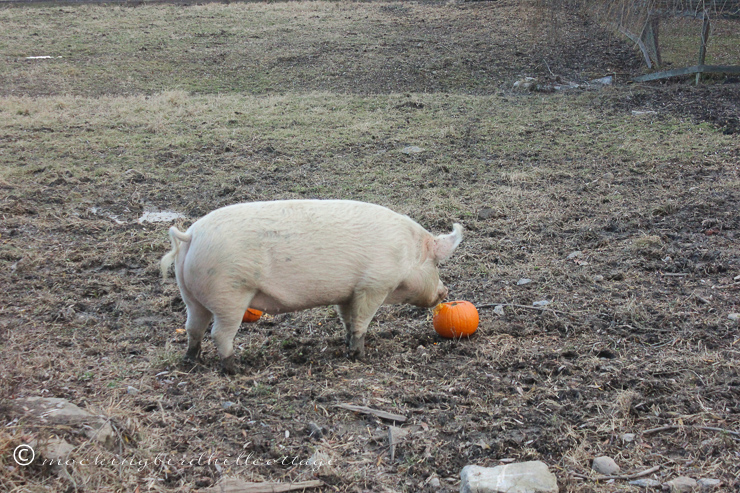
One of the staff members was tossing pumpkins in the pens for the pigs. They love them, so they’re a special treat.
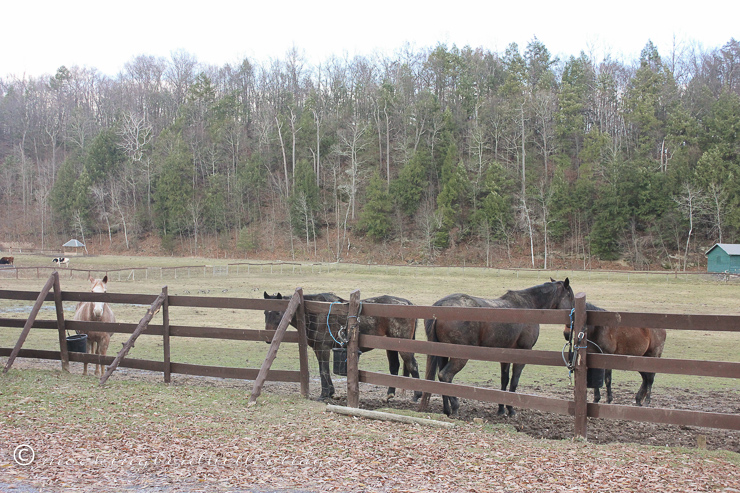
There are horses everywhere. In another paddock that we saw off in the distance, there are several blind horses.
These guys were hungry, it was almost dinner time.

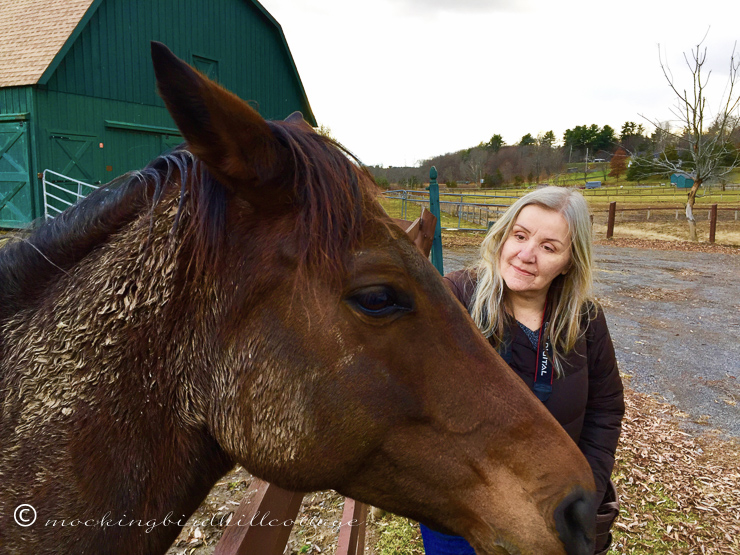
What a beauty! (And I’m referring to the horse.)
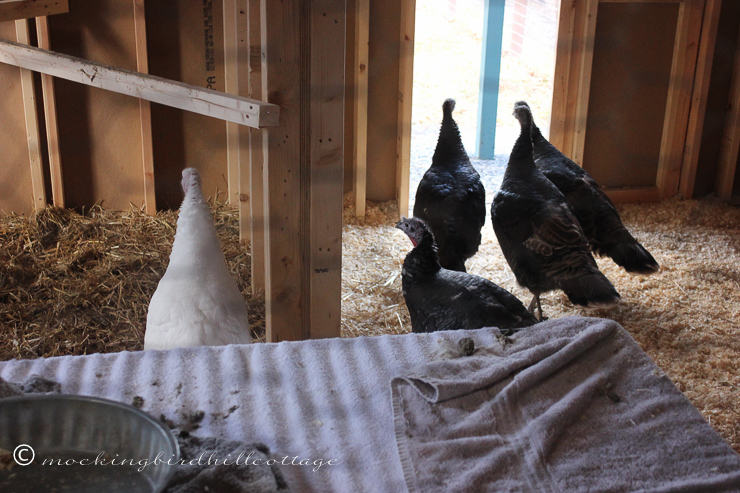
Turkeys.
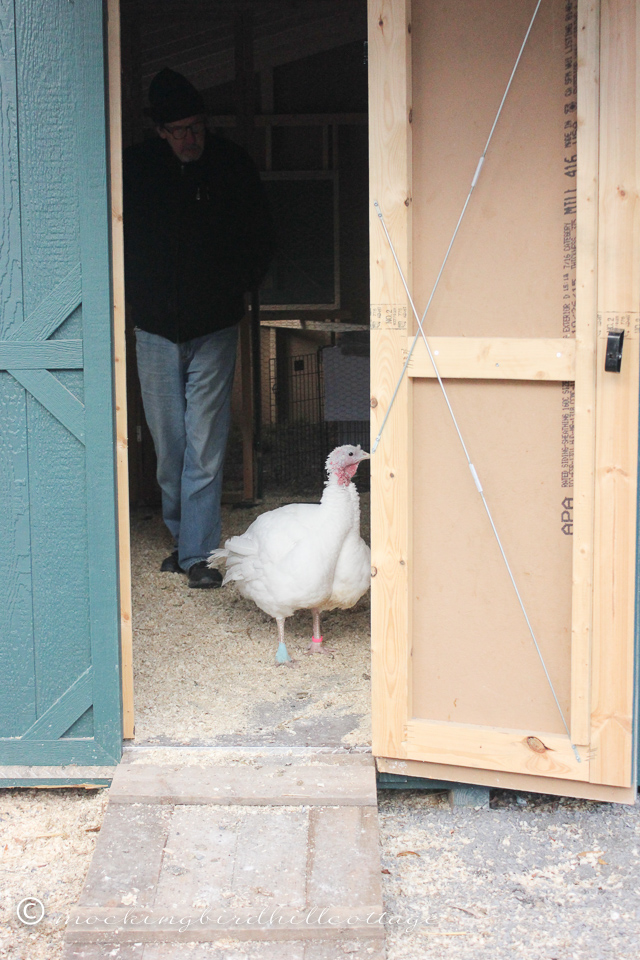
Don and this beauty. The bandage is there because they can develop (I can’t remember the name of it) a condition from standing so much. She was limping a bit, but she’ll get better.
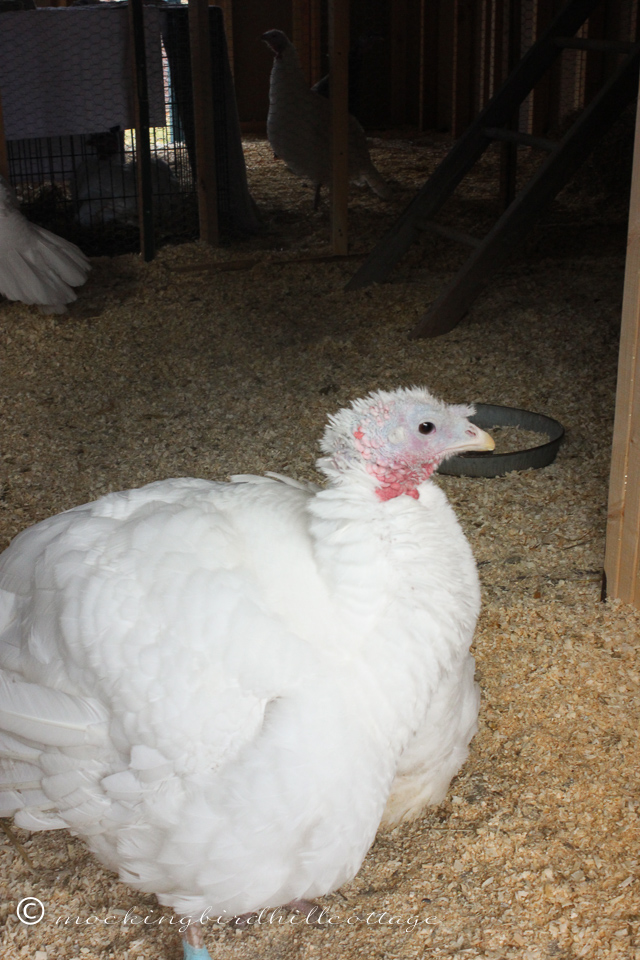
I haven’t had turkey in years. Meeting these lovelies makes me glad I made that decision.
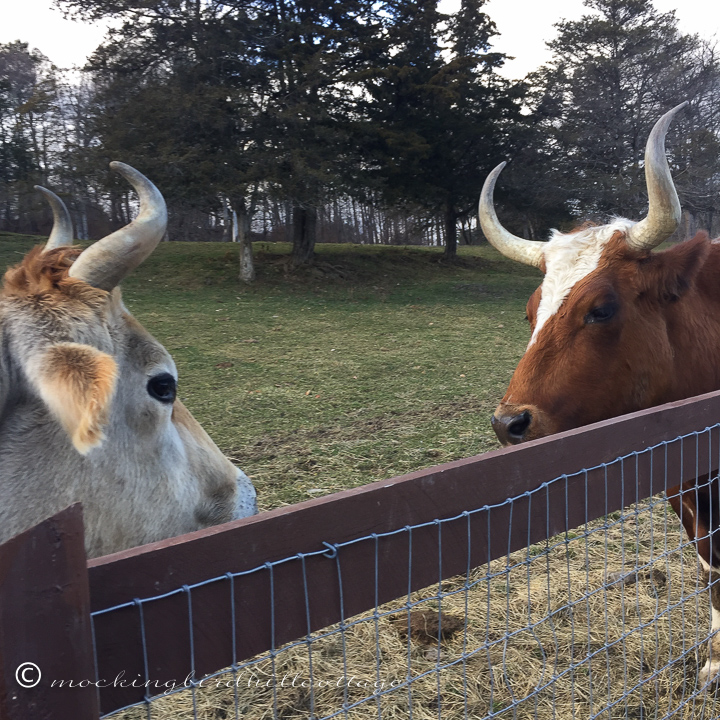
Jesse and Amos. They’re huge. And gentle. They were rescued from a former petting zoo of sorts called the Catskill Game Farm. The farm closed several years ago. And, as often happens, when they closed they had to get rid of their animals, animals that had only known the farm as their home. They auctioned them off. The Sanctuary was able to rescue some of the animals, including these two.
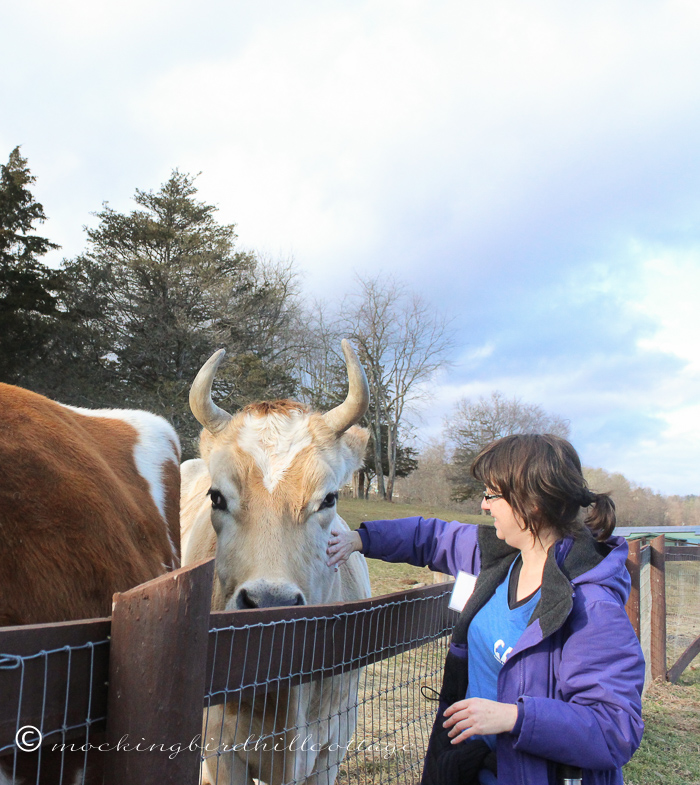
Lesley (our tour guide) and Jesse.
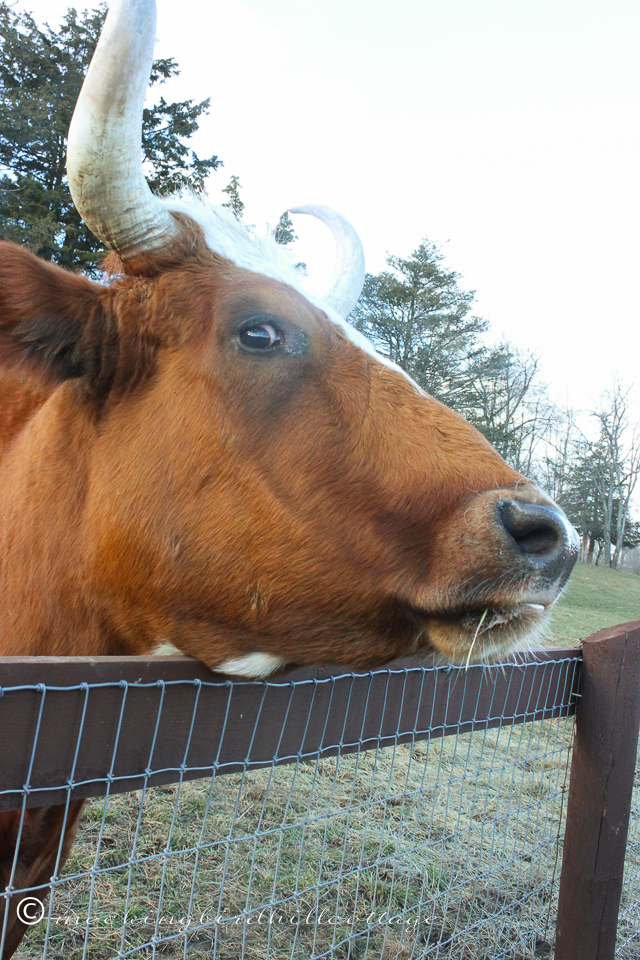
Amos.

They’re beautiful, aren’t they?
The dairy industry (factory farming) routinely takes calves away from their mothers almost immediately. The mothers cry out for them. The aim is to keep the mothers pregnant and supplying milk, according to Lesley. So the mothers live a life of constant pregnancy and never knowing and raising their babies. The calves (male) are raised in narrow pens and then are killed for veal. The females are raised to eventually go through the same cycle of pregnancy and milk providing as their mothers.
No lecture here, just facts.
The same thing happens with goats. Baby goats are taken away from their mothers almost immediately, for the same reason.

Handsome Amos. We were asked to guess his weight and I guessed 1500 pounds. I was right.
When allowed to live a peaceful non-factory farmed animal life, these animals can live 20 – 25 years.

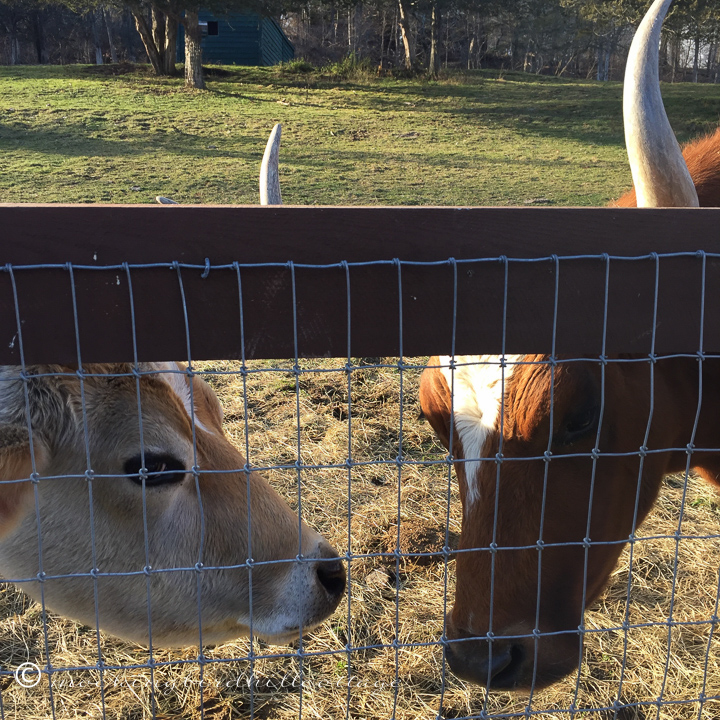
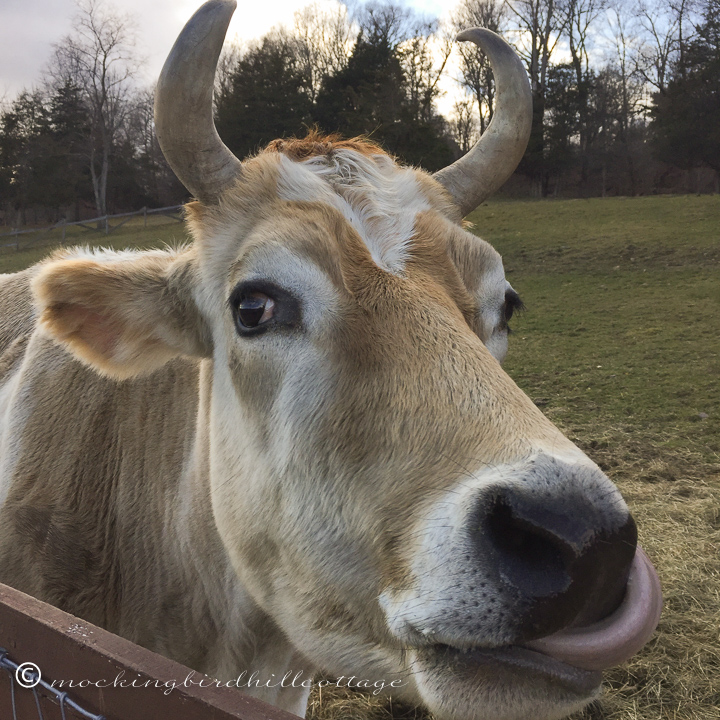
Both Jesse and Amos licked my hands. They were so gentle.
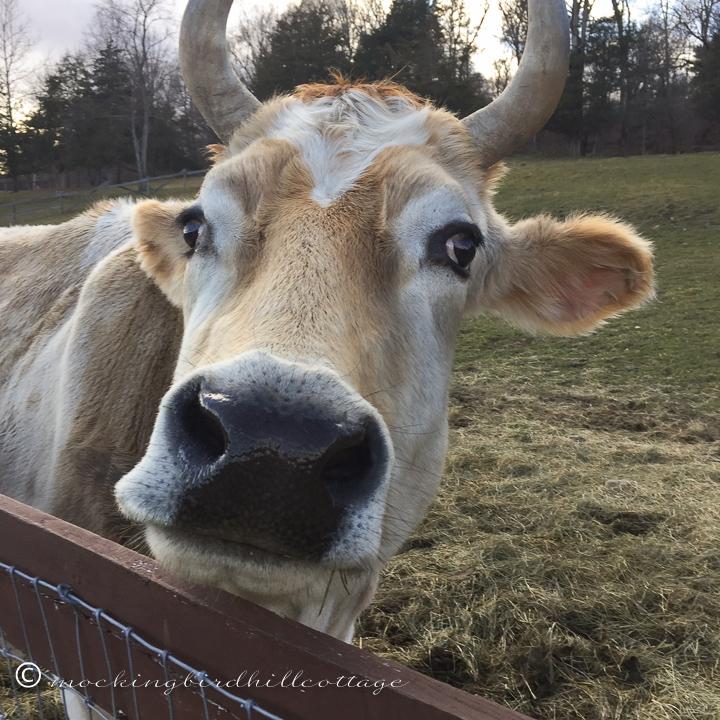
Truly, I could gaze into those eyes for hours.
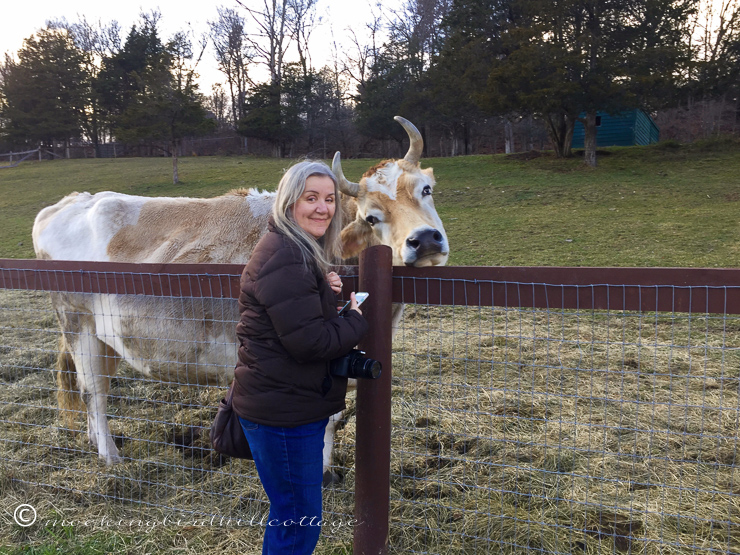
I’m in love.
There are so many more animals on the grounds that have been rescued and live the life of peace and love they deserve. Catskill Animal Sanctuary not only rescues animals, they are also educators. About them, from their website:
“Nonhuman animals have a right to live their lives free of suffering and exploitation of humans. Catskill Animal Sanctuary exists to provide them with love and safety until they do. The Sanctuary is a 110-acre refuge in New York’s Hudson Valley for eleven species of farmed animals rescued from cruelty, neglect and abandonment. Thanks to the generosity of people like you, over 4,000 animals have been rescued since 2001. Between 250 and 350 residents call the Sanctuary home at any given time.
We believe that looking an animal in the eye and seeing someone – not something – looking back is one of the most profound shifts human beings can make in their understanding of the world and their place in it.”
And from their mission statement:
“Catskill Animal Sanctuary rescues farmed animals, ignites social change to end their exploitation, and champions vegan living.”
You can learn more on their website, Catskill Animal Sanctuary.
Hope you enjoyed the tour!
Happy Sunday.

